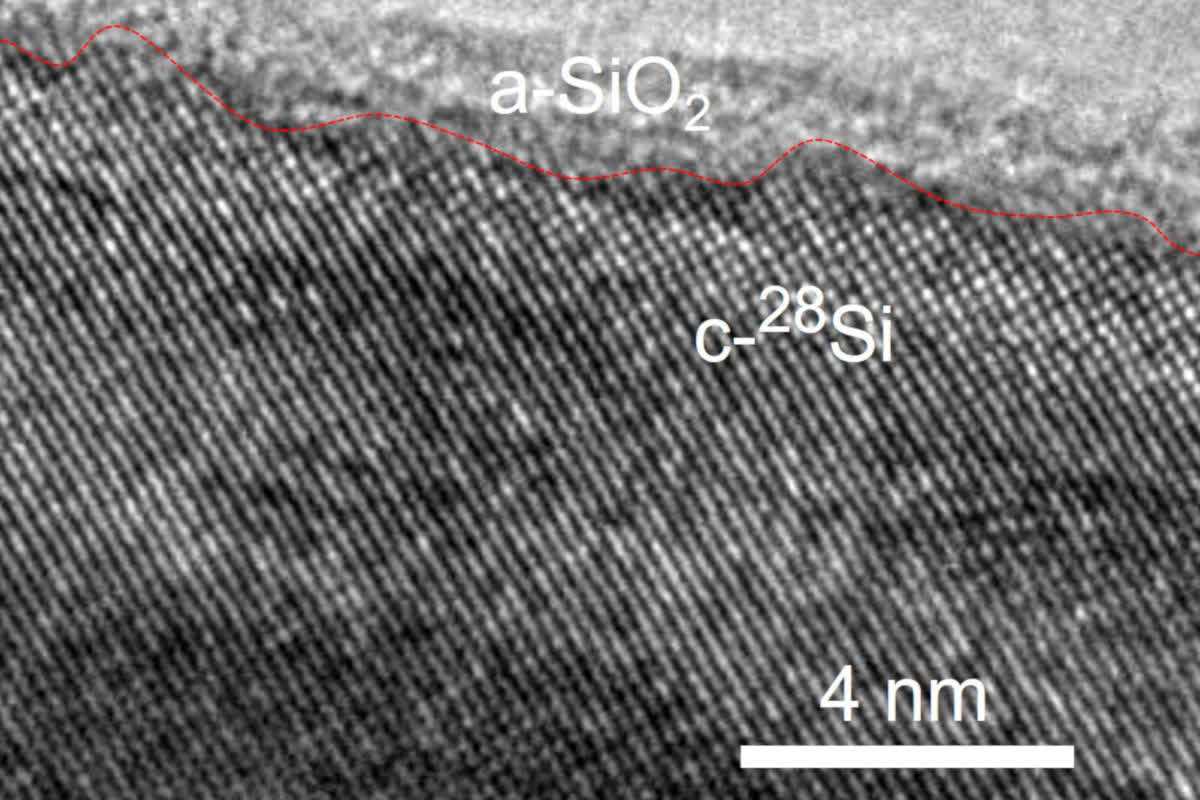[ad_1]
Backside line: Scientists from UC Berkeley have developed and demonstrated a brand new kind of ultrathin silicon nanowire with warmth dissipation properties far superior to at present used expertise. The invention might result in smaller and sooner microchips, however manufacturing may very well be a problem.
Silicon in trendy electronics is affordable, ample and a great conductor of electrical energy. It is not a great conductor of warmth, nevertheless, and that could be a little bit of an issue contemplating extra warmth is a pure enemy of electronics. The difficulty solely will get amplified in tiny microchips packing billions of transistors.
As Berkeley Lab explains, pure silicon is comprised of three predominant isotopes. Roughly 92 % consists of the isotope silicon-28 whereas the remaining 5 % and three % is silicon-29 and silicon-30, respectively.
It had lengthy been theorized that chips made with pure silicon-28 might higher conduct warmth and maybe result in sooner and denser electronics. This was put to the check within the mid-2000s however single crystal samples solely exhibited 10 % higher thermal conductivity. Merely put, it wasn’t well worth the cash and energy to create isotopically pure silicon for such a small achieve, so the remaining silicon isotope materials was put into storage at Berkeley Lab in case different scientists may someday want it.
A number of years again, that very situation introduced itself.
Scientists at Berkeley have been attempting to provide you with methods to enhance warmth switch in chips and questioned if nanowire fabricated from pure silicon-28 would assist. They reached out to the proprietor of the saved materials and have been capable of safe sufficient for testing.
The primary check concerned bulk 1-millimeter-size silicon-28 crystals, and their outcomes mirrored the ten % enchancment realized years in the past. The group then used a course of known as electroless etching to craft pure silicon and silicon-28 nanowires simply 90 nanometers (billionths of a meter) in diameter, or about 1,000 instances thinner than a strand of human hair.
The scientists anticipated an incremental achieve over the earlier outcomes however have been shocked to see the pure nanowires conduct warmth 150 % higher than pure silicon nanowires. How was this doable?

Statement below an electron microscopy revealed a glass-like layer of silicon dioxide on the floor of the silicon-28 nanowire. Computational simulation experiments additional famous that the absence of silicon-29 and silicon-30 saved phonons from escaping to the floor the place they’d be slowed down.
Phonons are described as waves of atomic vibration that carry warmth by silicon. Once they encounter silicon-29 or silicon-30, which have completely different atomic lots, the phonons get confused and decelerate, hampering warmth switch. That is not a priority with pure silicon-28.
“To find that two separate phonon-blocking mechanisms — the floor versus the isotopes, which have been beforehand believed to be unbiased of one another — now work synergistically to our profit in warmth conduction could be very shocking but in addition very gratifying,” mentioned examine chief Junqiao Wu.
The group’s subsequent objective is to find out if they will management, relatively than merely measure, warmth conduction in pure silicon nanowires.
The complete examine has been printed within the peer-reviewed scientific journal Bodily Overview Letters.
Picture credit score: Sergei Starostin, Matthew R. Jones and Muhua Solar from Rice College
[ad_2]
Source_link

